The foot epidermofytosis is a fungal disease, which is caused by pathogens and dermatophytes that were placed on a person's skin, from the gender of trichophyton.
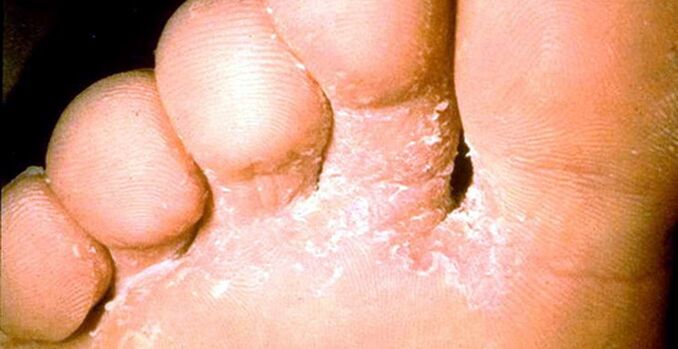
There is a complex infection of the nails and skin on the feet and between the fingers that are interconnected.
Diseases of some professions that are in high heat and humidity, favorable for the development of fungi are particularly susceptible to disease - these are athletes, miners or people simply do not follow their foot hygiene.
The reasons for the appearance
The main condition for the occurrence of the disease is to infection of the skin of the feet, that is, the entry of the fungal dispute.This occurs in public places or in direct contact with the carrier through personal hygiene products, for example, shoes or socks.
The main places of various fungi accumulations are public showers, baths, saunas, closet rooms etc.
Moreover, favorable conditions for the development of fungi should be created, which is facilitated by the following factors:
- increased humidity;
- Foot sweating;
- long -term wearing unpleasant shoes;
- low quality socks or shoes with insufficient ventilation;
- Professional activities (sports, work), when the feet are in constant warmth and experience water waters;
- vein thrombosis;
- Vascular diseases;
- diabetes mellitus;
- weakened immunity;
- excessive work;
- Stress and nerve overload.
The fungus is not always activated when it comes to the foot, as the body has its own protective functions.The disease occurs only in the presence of pathologies.
For example, socks squeeze the blood vessels and the blood supply level is reduced, or the legs are constantly warm with high humidity and the acidity of the skin decreases, creating favorable conditions.
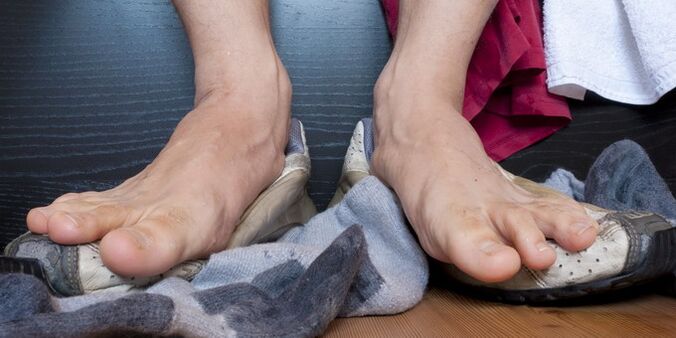
This is also facilitated by stress and excessive work that reduces the body's protection against any pathogens.
Symptoms and stages of fungi
The disease is characterized by the form and stages of the epidermophitosis.The main symptoms characteristic of all shapes are peel and redness of the skin between the fingers and the legs.There are four stages of the disease:
The deleted or soft phase
Among the toes, the light sealing seals are observed, the legs are clean.The patient practically does not feel discomfort or other unpleasant symptoms.
Squamous-hyperkeratotic
At this stage, the disease manifests itself more clearly.On the phalanges of the fingers and between them, as well as on the sides of the legs, there are skin seals of a brown or bluish tinge.
The skin is peeling with dry scales.The patient has increased leg dryness.White and yellow forms can appear similar to corn.
Infected places shine itching.An unpleasant odor comes from the feet.
Intriguing phase
The legs are constantly wet and charming.There are similarities of edema between the fingers.White or yellow skin swelling appears.
The skin is peeling over the entire surface of the feet and fingers.There may be wounds, cracks and erosion, which sometimes bleed, if damaged.
The patient experiences constant discomfort, itching or poor pain, especially when walking.Skin detachment is important as well as seals.
Double
Across the surface of the feet and between the fingers, formations that resemble bubbles appear.They accumulate a liquid that releases with damage to the bubble wall.
After that, swelling and inflammation of the skin may occur.The legs and fingers are constantly itching, and the legs acquire a strong necessary odor that cannot be crushed with soap or other tools.
Complications
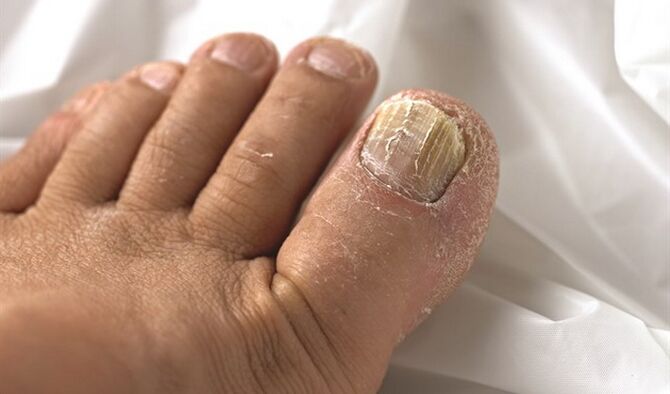
In addition, the disease falls on the nails that gradually turn yellow, then deform and exfoliate.This occurs in any third case of epidermofitics, if tightened with treatment.
In the most advanced cases, the fungus "throws" into other parts of the body, causing the skin stains, an allergic reaction or other pathologies.
Treatment
To treat the disease, you should contact a mycologist.Various tests and studies will be performed on the basis of which an appropriate treatment will be described.
The therapy is aimed at destroying the fungus.For this, the funds are used for both internal and local use, moreover, at the same time.
medicaments
Mushroom treatment occurs at home and lasts, depending on the scene, from 2-3 months to 1 year.To suppress the fungal activity from the inside, use the 2-chlorine-4-nitrophenol drug.
In parallel, the affected areas should be treated with local medicines (cream, gel, ointments):
- Clotrimazole.
- Tolnafat.
- Mikonazole.
- Terbinafin.
- Econazole nitrate.
- Hydrochloride Naftyfin and others.
When purulent secretions and inflammation appear, itraconazole is usually prescribed.A systematic approach allows you to deal more effectively with the infection.
The drug choice and course of treatment is performed by the doctor who participated on the basis of the clinical figure.
Folk remedies
Traditional medicine remedies are used as an additional measure of the fight against fungi, but not independent.
Popular recipes can only help in the early stages of the disease.Consider some of them:
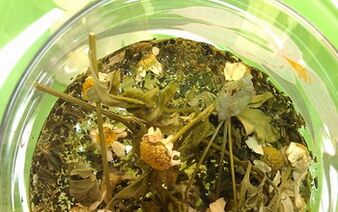
- Vaseline and salicylic acid.For 1 teaspoon of oil jelly, half of the aspirin or salicylic acid tablet is taken, mixed and applied to the area between the fingers, rubbing slightly.This will help stop the spread of fungi and relieve unpleasant symptoms.
- A decoction of plants.The following drugs should be obtained that have an antifungal and anti -inflammatory effect: chamomile, horses, leaves of St. John and Eucalyptus.All plants are taken in equal amounts (1 teaspoon per 0.5 l of water).The water is brought to a boil and boiled for 10 minutes, after which it is also insisted on for 30 minutes.In decoction, the legs grow, gradually adding hot water.
- Buckthorn sea oil.A cotton swab is wet in oil, which rub the affected areas.It is a good antiseptic that relieves pain, itching and inflammation.
- Soda, salt and soap.In a hot water pelvis, a piece of laundry soap and 1 tablespoon soda and salt are distributed.The procedure of placing the feet is performed daily, preferably before bedtime.This will help cleanse the skin from the keratinized parts and better affect the effectiveness of the medicines that penetrate deeper into the fingertips and legs.
- Boric acid.For treatment, a solution (2%) of boric acid is used, which rub the feet with a cotton swab.This is a strong antiseptic for fungi.However, you need to be careful and not perform the procedure too often so as not to get a chemical burn.
Shoes and underwear
In addition to direct treatment, you still need to monitor the condition of the shoe and linen.This is important, as therapy can be pointless if it is neglected by hygiene.
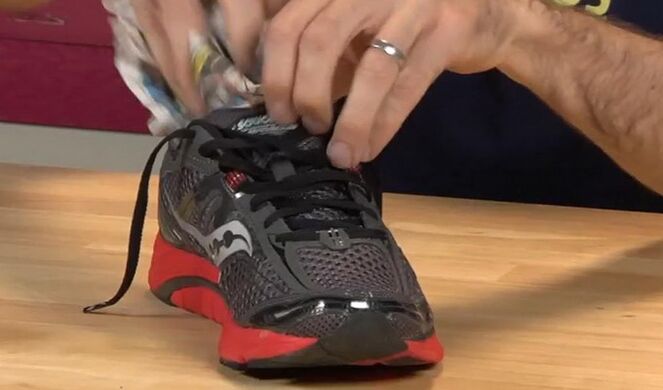
The shoes need to be dried constantly, and the socks can be changed daily.It is useful to treat daily shoes with the formal for disinfection.
After performing the water procedures, the legs are completely wiped with a dry dry towel, especially between the fingers.Then immediately apply medicinal creams or ointments that the doctor prescribed.
With increased sweating of the feet, a decoction or infusion of oak bark, as well as ordinary vinegar, helps.
The main thing is to keep your feet always dry, as moisture is a favorable environment for the development of fungi.
PREVENTION
There are a number of preventive measures aimed at preventing relapse or infection with a fungus on the foot:
- Wash your feet several times a day, wiping the dry ones;
- You cannot use other people's socks, shoes or towels;
- Daily shoes should always be dried before using;
- In public places, use slippers or other shoes, and then use disinfectants to reduce the risk of infection;
- The shoes should be comfortable and not cause to sweat the legs;
- Visit a doctor regularly for preventive examinations for any disease;
- eat properly;
- Reduce the use of alcohol and sweet food.
cONcluSiON
Epidermofytosis is a very unpleasant disease as it disrupts the appearance of the feet and causes a strong unpleasant odor.
The legs constantly sweat and begin to blow up.This interferes with normal life and deals with a person.
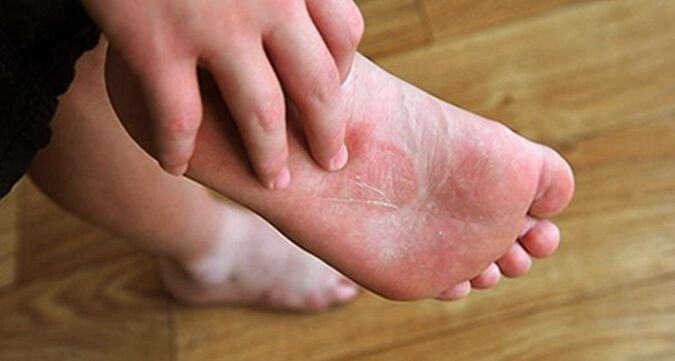
First of all, the disease affects personal life and, consequently, treatment should begin in the first symptoms, given the risk of infection with the fungus of others.
In the initial stage, the disease is easily therapy, and recovery occurs after a couple of months.However, in an advanced state, this can last one year or more, so it is not necessary to delay.


















